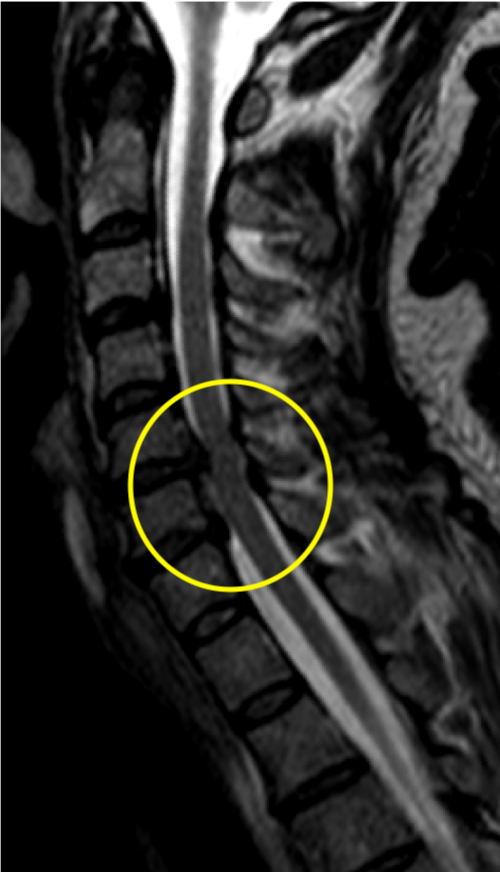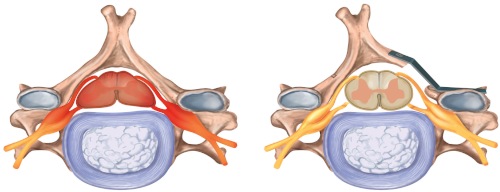Cervical spinal stenosis (narrowing) is part of the natural evolution of aging and is therefore common in the normal population and progresses slowly. It often does not cause symptoms. One of the first signs of cervical spinal cord irritation (myelopathy) is the onset of gait disturbances: patients feel dizzy when walking. In more advanced forms, the stenosis causes greater difficulties in walking, with loss of strength, also difficulties in holding objects in the hands, difficulties in performing fine finger movements as well as writing. An MRI examination will be needed to confirm the diagnosis

